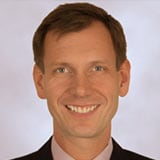The Federal Reserve chairman’s fixes for the weak economy have left it dangerously addicted to low interest rates, contends Axel Merk of Merk Investments.
In his interview with “60 Minutes,” Federal Reserve Chairman Ben Bernanke suggested it is a myth that quantitative easing implies printing money. With all due respect, Mr. Bernanke, if it looks like a duck and quacks like a duck, it is a duck!
Indeed, the Fed prints “super money.” When the Fed buys government bonds from a bank, it credits the bank’s account at the Federal Reserve with the amount due. The bank, in turn, can use the cash to write new loans of up to 10 times its value; those loans may be deposited elsewhere by the borrower, so that money created by the Fed out of thin air can have a multiplier effect of 1:100 by the time it makes its way through the economy.
The Fed That Couldn’t Aim Straight
The Fed cannot control where the money flows. Instead of flowing into new investment, it ends up in assets with the greatest monetary sensitivity: precious metals, commodities and foreign currencies. [This is working out just as Merk predicted it would a month ago—Editor.]
The money doesn’t “stick” where the Fed would like because the Fed is fighting market forces. Without massive fiscal and monetary intervention, over-extended consumers would downsize further. However, “downsizing” implies foreclosures and bankruptcies: Promoting such a course of events could well be political suicide for policy makers.
The real problem is that the massive and ongoing intervention by policy makers led us to believe that there is a magic wand—the Fed’s printing press included—that can fix our sorrows. Because the government has come to the rescue with such great force, the financial reform bill may not be worthy of its name; our system is no better than before the crisis; on top of that, we may be setting ourselves up for a much worse crisis further down the road. Beyond regulatory reform, there is also no incentive to engage in fiscal reform as the Fed helps finance the government deficit.
Bernanke said he could raise interest rates in “15 minutes” should the economy need to be tamed. Yet the Fed chairman has extensively argued that tightening monetary policy too early after a recovery took place was a key policy mistake of the 1930s; it appears highly unlikely that the Fed will apply any “15-minute” policy to the US economy.
Debtor Nation’s Worst Nightmare
By fighting market forces, we keep, or quite possibly expand, the extensive leverage in the economy. As a direct result, the US economy is exceedingly sensitive to monetary policy. Think of it this way: If you have no debt, you couldn’t care less about interest rates. If you have loads of credit cards bill, in addition to a large mortgage, the amount of sleep you get every night may be highly correlated to interest rates. So if the Fed gets its wish and we get strong economic growth, how on earth is the Fed going to mop up all the liquidity they are saturating the economy with? We have grave concerns that as soon as the Fed would indeed start tightening, it would have a far more amplified effect than they anticipate, causing the economy to plunge rather sharply.
In a best-case scenario, we may end up with a rather volatile Fed policy in the years to come, bouncing back and forth between full-speed ahead and applying the emergency brakes. As it turns out, very little, if anything, has really worked according to the best-case scenario in recent years. So the risks of quantitative easing far outweigh the potential benefits.
Rewarding Risk, Punishing Savers
What are those “benefits” anyway? At the risk of great simplification, it’s all about home prices. Millions of homeowners are under water. To remedy the situation, homeowners can downsize (the healthiest from a macro point of view, but politically not an option); pay down their debt (may happen individually, but real wages haven’t gone anywhere in a decade, thus making it an unlikely option); or, alternatively, the Fed can employ its mythical printing press in an effort to push up the price level. The “benefits” thus go to those with too much debt; the pain goes to those who have been savers, including pensioners. The policies are rewarding speculation; not just any, but the type of speculation that chases the next great intervention by policy makers, not the next great business opportunity. Asset classes have become increasingly correlated as a result.
Excessively accommodating monetary policy fosters capital misallocation; those in desperate need of yield may be buying ever longer-dated and riskier securities. The greatest bubble in monetary history—a bond bubble—may have been in the making.
Read more commentary from Axel Merk at the Merk Mutual Funds Web site here…





















